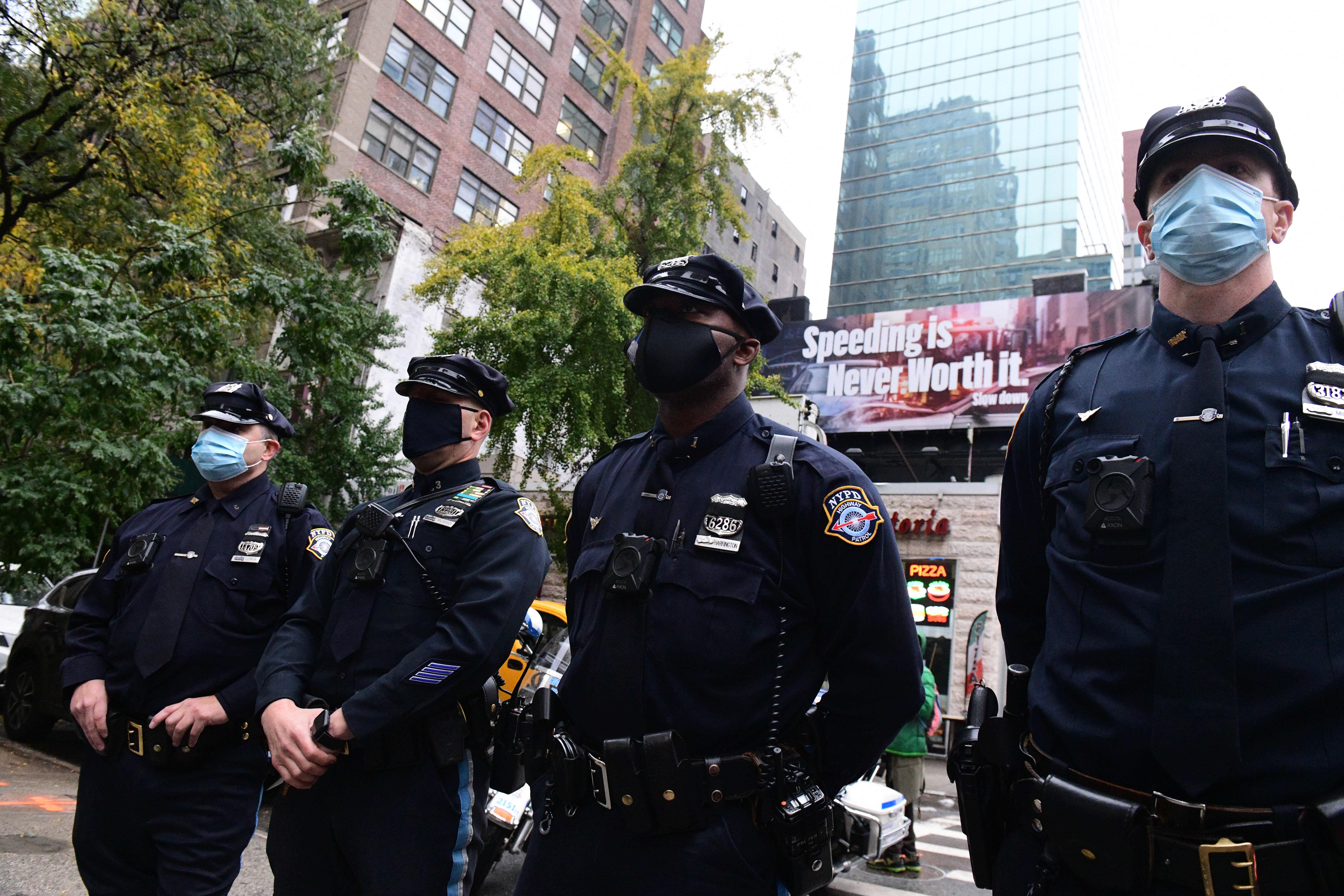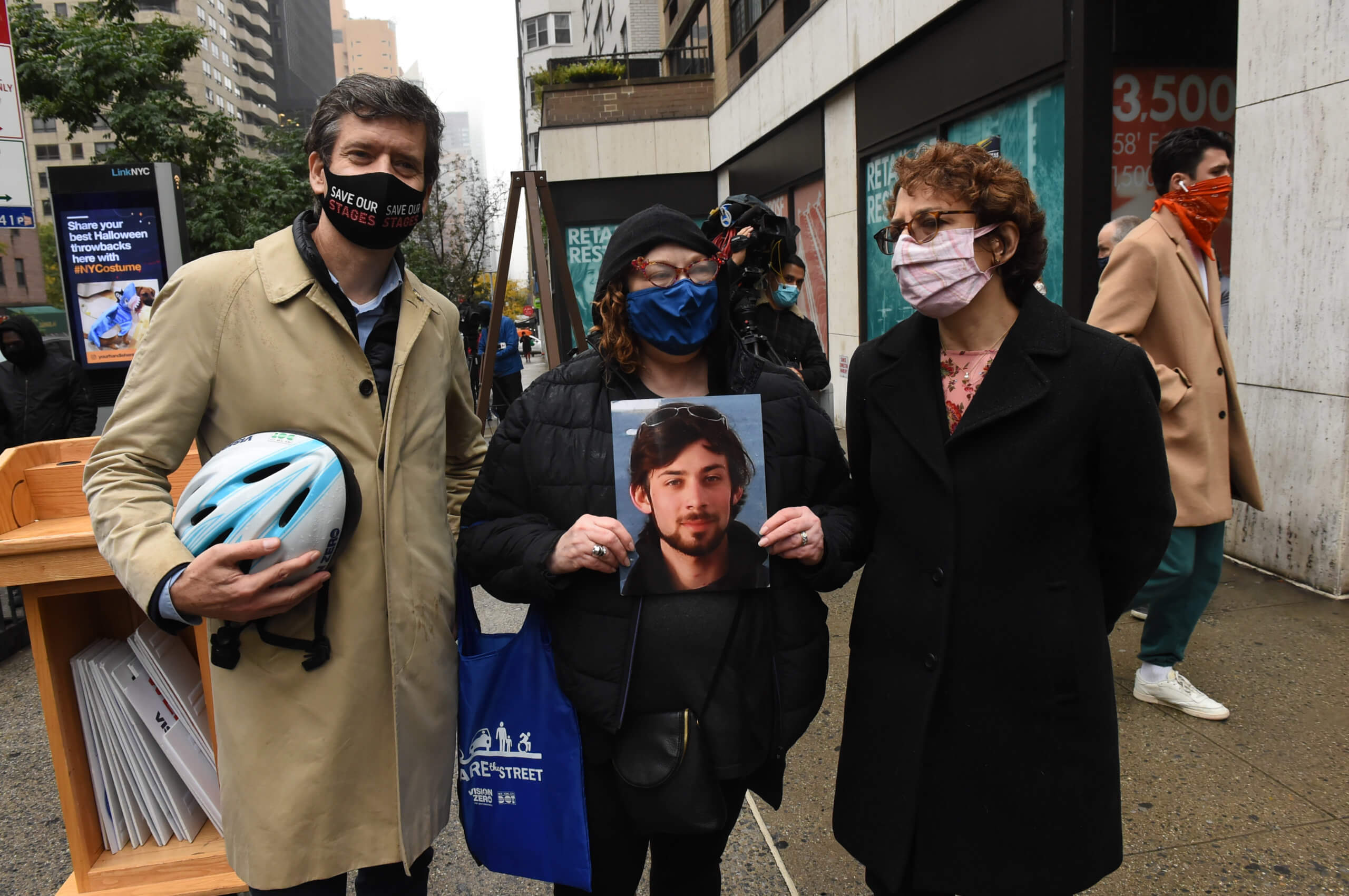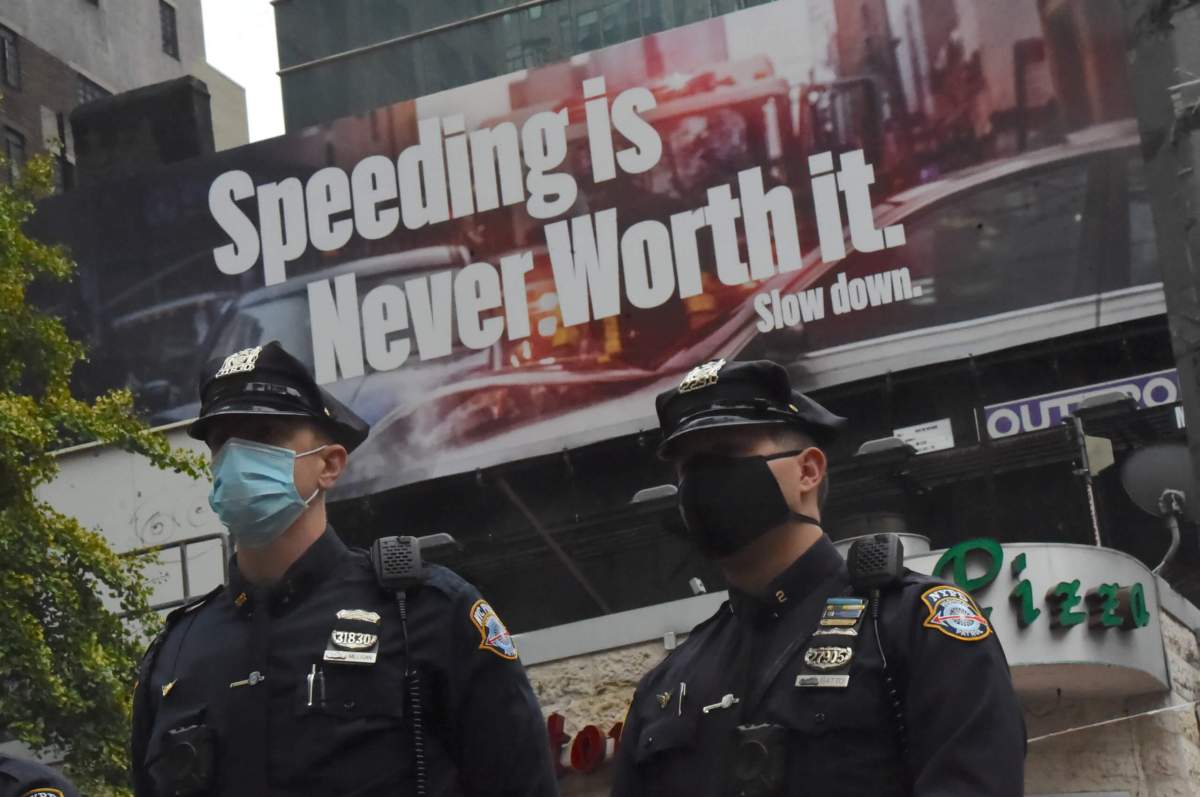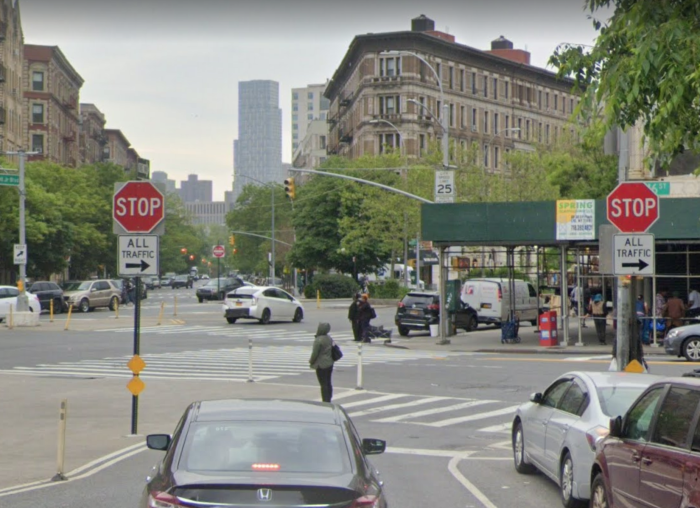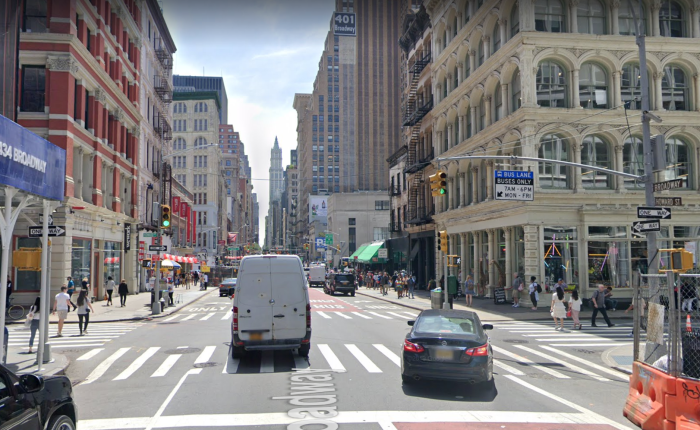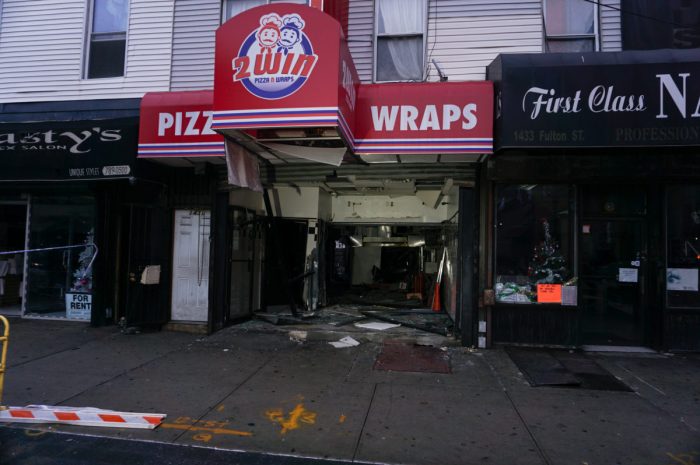With the coming end to day light savings time on Sunday, city officials flanked by highway police warned pedestrians and motorists Tuesday, to be even more careful as the sun will set earlier, making it less safe on the city streets.
This comes as police warn that they expect more vehicle crashes with motor vehicles, pedestrians and bicyclist—with fatalities for bikers alone rising by 5% over last year. There were 9421 vehicular crashes involving other cars, trucks, bicyclists and pedestrians as of the end of September, with 35 deaths including 13 pedestrians and six cyclists, according to NYPD statistics.
City officials, led by Department of Transportation Commissioner Polly Trottenberg launched their fifth annual “Dusk and Darkness” campaign at East 45th Street and Second Avenue in Manhattan to remind both drivers and pedestrians that as of Sunday, daylight savings time ends and they expect traffic crashes to traditionally increase, especially during evening hours.
In addition, they also wanted to remind motorists that a new seatbelt law will also take effect on Sunday, requiring all passengers in a vehicle, whether in the front or rear seats, to buckle seat belts or be liable for a fine.
“This is our campaign to remind motorists that darker evening hours have proven statistically to be the most dangerous time of the year for pedestrians,” said Trottenberg, flanked by police, city leaders and a row of Highway motorcycle cops. “I know a lot of you have been following the sobering Vision Zero news this year in New York, like a lot of cities that have been experiencing the pandemic, roadway fatalities are up—these aren’t just numbers, these are our families our friends, our neighbors, co-workers, our fellow New Yorkers.”
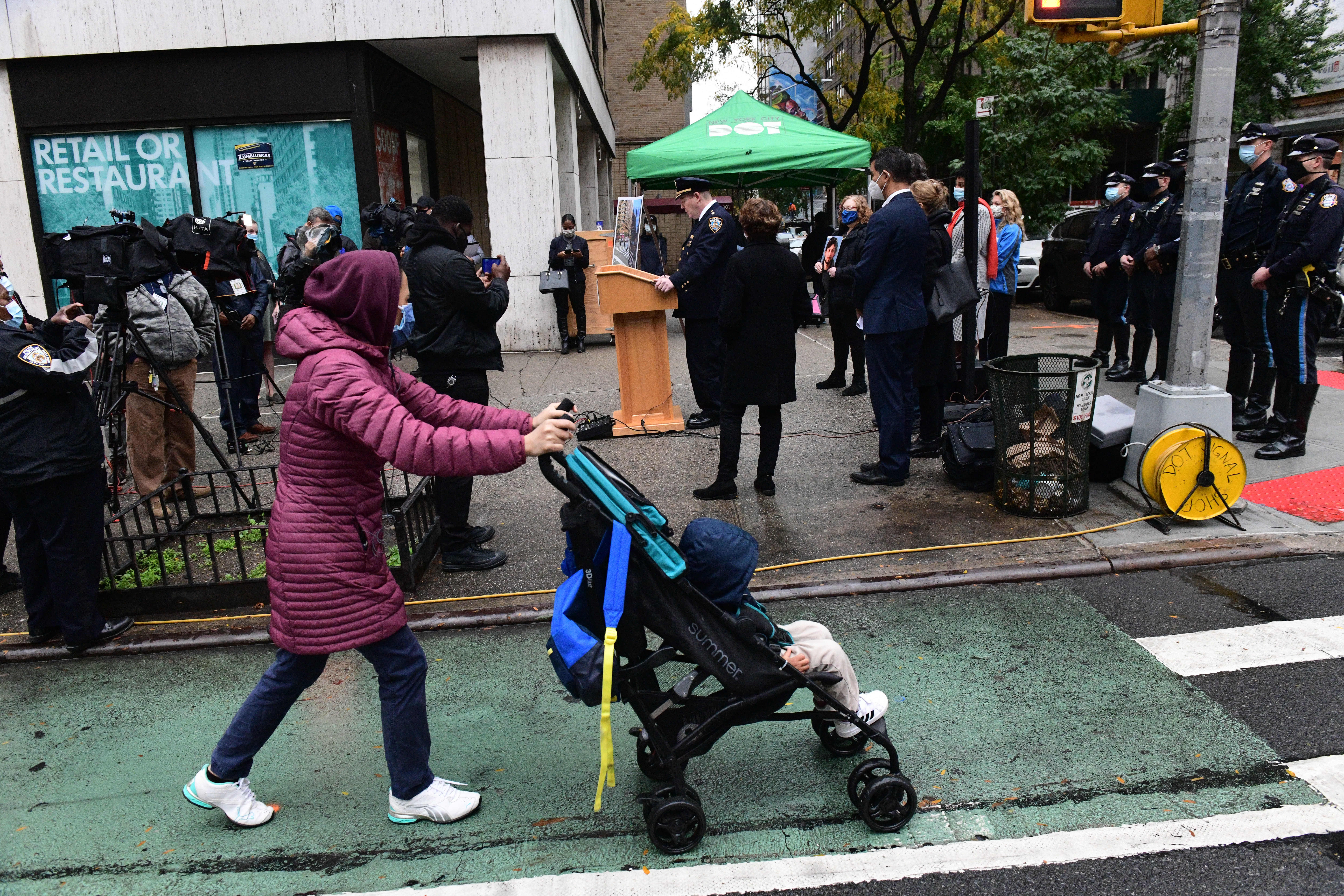
She said that while fatalities are up, the number of pedestrian and bicyclist fatalities have “remained lower,” she added, “we are reminding drivers to slow down, be mindful of pedestrians in the crosswalks, children walking home from school and people going out this week going out to vote—as its getting darker out, this is the time when motorist really need to be more safe.”
Behind Trottenberg, was a large billboard that read, “Speeding is never worth it—slow down.” It’s one of two in the city emphasizing the dangers to both motorists and pedestrians. She said in normal times, they would be doing regular outreach, but the pandemic is forcing social distancing.
Deputy Chief Michael Pilecki of the transportation division said they use the “traffic stat” process to determine where the safety issues exist in each precinct, an 83 page traffic crash compstat which is also available to the public on the NYPD web page by precinct. He said this helps them analyze the patterns, clusters and trends to determine the strategies to reduce traffic crashes and their injuries—with special attention to pedestrians, cyclists, children and seniors.
The good news is that crashes involving pedestrians were down 34% over the year before, fatalities down by 15%—but a 5% increase in cyclist strikes—but fatalities among bikers is down 24%.
“We find these statistics very encouraging, but as we know, the city experiences an increase in pedestrian and bicycle collisions this time of year, during the time from dusk to darkness,” Pilecki said. “As a result, the NYPD will focus on education and enforcement efforts throughout the city during these hours. Our precinct traffic safety teams and precinct patrol officers will also focus on hazardous driving violations that put our pedestrians, bicyclists, seniors and children most at risk.”
Chief Pilecki added that the most fatalities occurred between 4 p.m. and 7 am., and most of the traffic collision fatalities occurred on the weekends, so much of their efforts will focus on those times.
State Senator Brad Hoylman, a sponsor the new seat belt law, said it will save people from injuries and death.
“It is literally your leadership that has paved the way forward for cyclists, drivers and pedestrians to use our streets safely,” Hoylman said. “They say that seat belts save lives, but you gotta use them. So I’m very proud that we passed my bill that requires everyone in a taxi cab, livery vehicle, to use their safety belts. The reason I was inspired to write this bill, is because I also represent NYU Langone Hospital and emergency room physicians came to be telling me of the injuries so this was important for us to pass and I thank Governor Cuomo for his support.”
Debbie Kahn, mother of Seth Kahn, a Fashion Institute of Design student killed in 2009, appealed to the public to “slow down.”
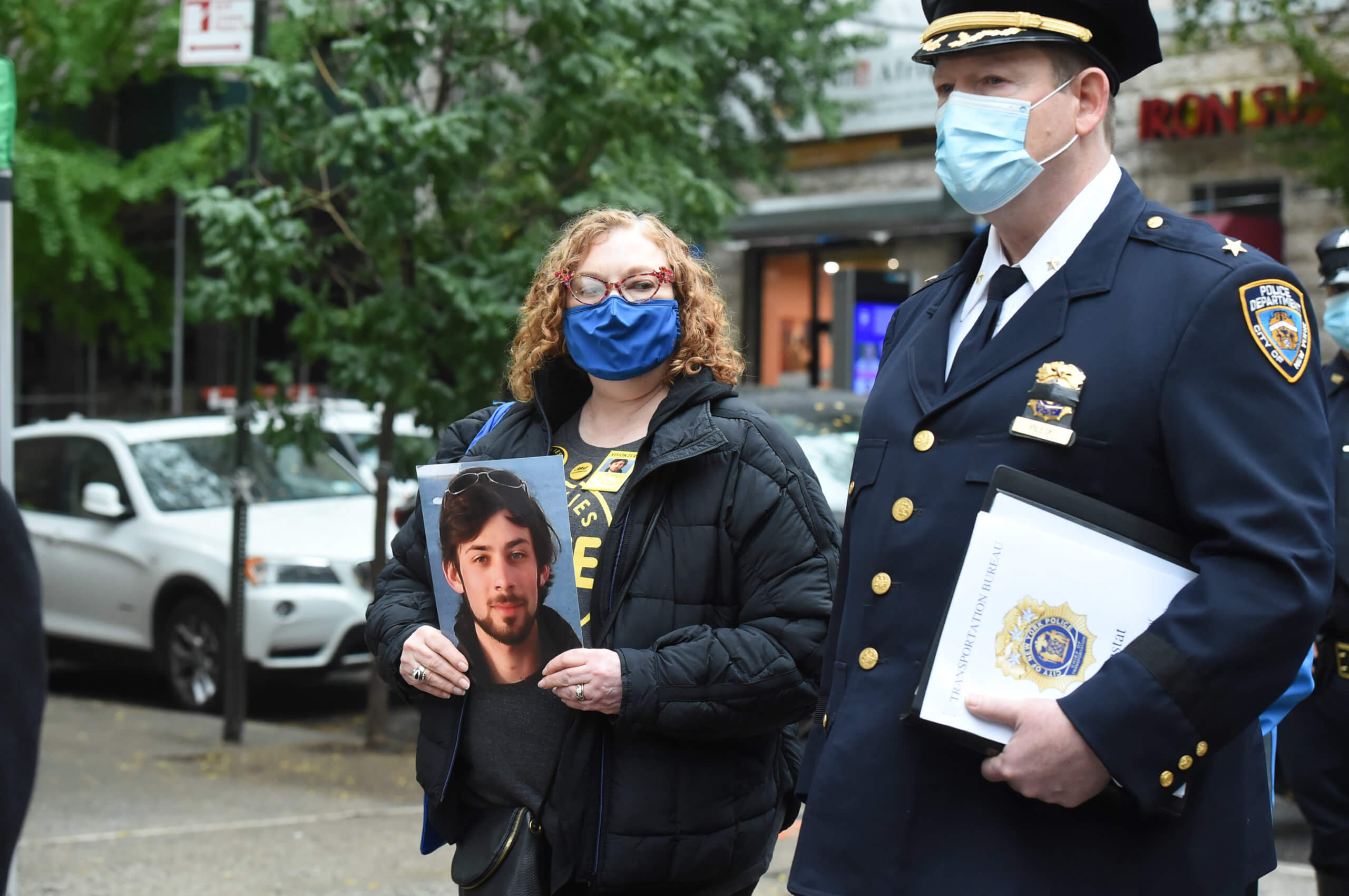
“My son Seth was killed, run over by a reckless driver, making a left hand turn, as my son was walking across the street, in the crosswalk with right of way,” Kahn said as she held the photo of her son. “Although it wasn’t dark out, it was daylight savings time, and when it gets darker on our streets, it’s much harder to see out. We all, including me, must be more careful. Drivers, motorcyclists, bicyclists, everyone needs to be more careful and pay attention and slow down.”
As Kahn prepared to leave, she talked with Senator Hoylman and appealed for speed cameras to be expanded beyond school zones.
“We have a bill—we’re going to make them universal,” Hoylman replied.
